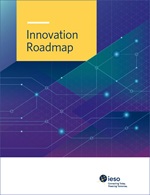Highest priority for resource allocation and engagement
|
1. Unlock the value of new and existing resources
|
Enable increased competition in IESO-administered markets where unnecessary barriers limit the ability of some resources to provide cost-effective grid services, e.g., address challenges that prevent resources from competing to provide energy, capacity and ancillary services and explore new participation models for DERs.
|
2. Provide leadership to mitigate emerging cybersecurity risks
|
Provide leadership and coordinate with electricity sector partners to prepare for emerging cybersecurity risks, e.g., address threats associated with the growing integration of consumer-level devices and establish standards for their integration into electricity system operations.
|
3. Increase the transparency and visibility of resources operating on the distribution system
|
In conjunction with local distribution companies (LDCs) and other stakeholders, explore new ways to obtain appropriate levels of visibility with respect to DER operations at the distribution level, e.g., assess the need to collect information about distribution-connected resources, including behind-the-meter resources and resources operating as part of an aggregation.
|
4. Build new capabilities to collect, store, share, analyze and use data
|
Determine how best to leverage electricity data to deliver a more efficient energy system, e.g., investigate opportunities to combine, share and/or standardize data sets to improve their value to the IESO and others in the electricity and broader energy sector.
|
Important areas core to IESO mandate
|
5. Address challenges associated with the growth in intermittent resources, DERs and variable loads on grid operations
|
Working with stakeholders, investigate and advance new methods for perating a grid with increased intermittent resources, DERs and variable loads, e.g., engage with suppliers, large load customers and aggregators to explore options for new products and services and/or opportunities for new and existing resources to provide existing services.
|
6. Inform new distribution system operations and business models to support bulk market efficiency and reliability
|
Engage with the sector to develop a shared understanding of new business and operating models for distribution systems, e.g., explore new concepts, such as distribution system operators (DSOs)/independent DSOs, loadserving entities, and future interoperability requirements.
|
Monitor or support action of others
|
7. Prepare for an increase in customer- and LDC-led DER deployment
|
Enable the sector to prepare and plan for issues related to the increase of DERs that may not participate in IESO-administered markets, and consider the impact with respect to supply and resource planning, stranded assets and reducing load on the system.
|
8. Anticipate and prepare for changing consumer choice
|
Prepare for the effects of growing consumer empowerment on IESO markets and operations, e.g., explore different models for consumers to secure electricity supply, such as community choice aggregation, bilateral contracting or peer-to-peer transactions, and the impact of new third-party products and services on consumers.
|
9. Design alternative approaches to provide system resiliency
|
Explore new approaches to providing grid-level resiliency, e.g., investigate opportunities for the distribution system to provide local resiliency services through, for example, microgrids, power electronics and energy storage.
|

